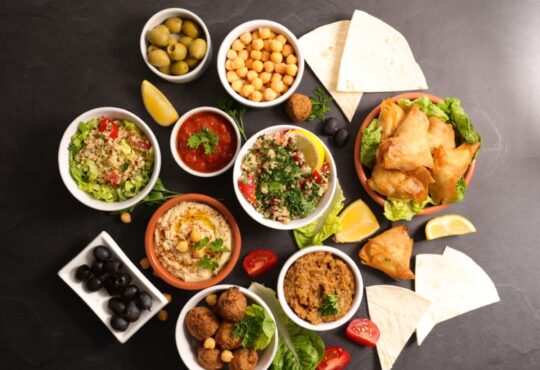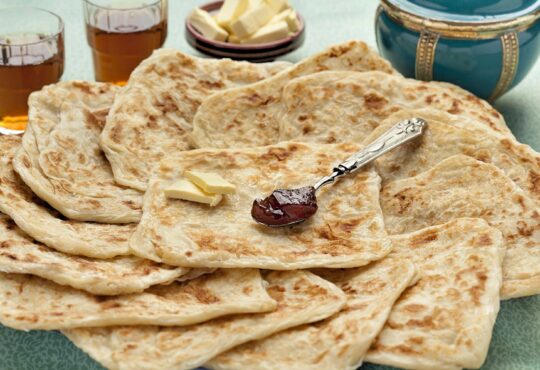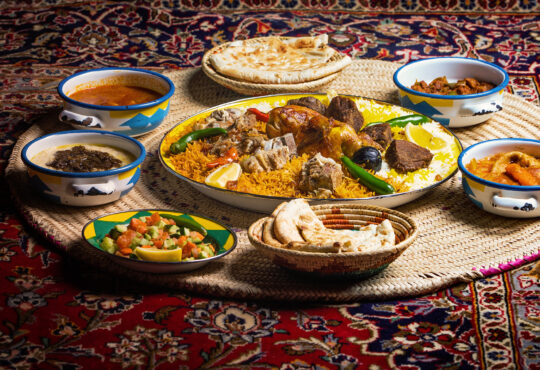1.3K
Malian food is more than just food. It’s an incredible cultural experience.
The Malian culinary repertoire is diverse and oftentimes surprising to those who have never tried it before.
Mali has been home to many different empires, from the ancient Songhai Empire to the French Colonial Empire, so you can expect an eclectic mix of influences in their dishes as well as a wide variety of spices and flavors.
In this blog post, we will explore 15 traditional Malian foods that everyone should try at least once!
Related Content:
Mali is a West African country that has historically dominated the spheres of agriculture and trade.
The people of Mali are known for their rich culture and amazing food! Here are 25 traditional foods from Mali that you should know about.
Chicken peanut butter stew
Tiguadege Na is a peanut butter stew. It’s delicious, nutritious, and super filling. No wonder Malians love it so much.
The name of the dish ‘Tiguadege Na’ literally means meat in peanut butter sauce! And it’s prepared by cooking chunks of meat (beef usually) with a thick and rich peanut butter sauce.
Vegetables such as potatoes, carrots, and herbs can be added to enhance the rich flavor of the dish. It’s served either with Couscous or rice.
La Capitaine Sangha
La Capitaine Sangha is one of the most famous foods in Mali. The fish, hot chili sauce, fried bananas, and rice mix make for an enjoyable lunch or dinner that will have your tongue tingling with delight! Truth be told, it is an unusual combination so I would recommend it for the more adventurous eaters.
Poulet Yassa (Chicken Yassa)
What’s more satisfying than a mouthwatering, savory dish? The answer: it doesn’t exist! Poulet Yassa is incredible Malian comfort food that will have you craving for more after one bite.
Poulet Yassa is prepared by marinating the chicken in an onion and lemon sauce and then cooking it with extra onions. The result is a tender, juicy and spicy meal with a kick of sweetness.
This yummy Malian dish can be served with rice or couscous.
Couscous de Timbuktu
Malian food is strongly influenced by North African cuisines as they share a lot of similarities when it comes to recipes. Couscous is one of these dishes that it’s popular in Mali but also an integral part of Morocco, Algeria, and Tunisia.
In Mali, the dish is called “couscous de Timbutku” where Timbutku was a regional trade center in medieval times, where caravans met to exchange salt from the Sahara Desert for goods which makes total sense.
The preparation and the presentation of the couscous de Timbutku are very much like the North African one. Steamed couscous grains with animal protein such as chicken, lamb, or beef.
Alabadja
Alabadja is a traditional specialty food in North Mali. It’s traditionally prepared during Eid celebrations such as the Sacrifice Eid where the meat of the sacrificed animal is used to prepare this dish.
Alabadja is a dish that consists of a mixture of rice, minced meat, a generous amount of butter, and dried dates. All the ingredients are mixed up then put to simmer for an hour and voila, the Alabadja is ready.
This dish is very filling and can be a main course or side dish. It’s definitely worth trying.
Fakoye
Fakoye is another traditional dish from North Mali but became a favorite dish to many people in the South of the country as well. It also goes by the name “Mulukhiya” in many Middle Eastern and African cuisines.
The simple dish is prepared from Mulukhiya leaves. The leaves are dried, crushed then boiled with spices and garlic until it becomes soft and thick.
Fakoye is usually prepared with mutton in Mali but you can find vegetarian Fakoye as well.
Jollof Rice
Jollof Rice is a very common and popular dish in West Africa including Nigeria and Uganda.
In Mali, Jollof rice is known as Kwankwan and is prepared with either white or brown rice, fish, and vegetables.
If you want to try a new twist on traditional Malian desserts, then this is it. The Bouille ‘burned milk tart’ is like a burnt cake: thick cookie dough swirled delicately with custard filling centers.
The Malian Bouille cake is made with simple ingredients which are milk, eggs, butter, sugar, and vanilla.
Katta is a unique kind of Malian pasta prepared by local women in the Timbuktu and Gao regions of Mali.
The pasta is made of local wheat flour dough that is then shaped into thin, short threads that look like tiny noodles.
The pasta threads are left to dry in the shade for a day, then toasted in a frying pan until they turn into a golden color.
The handmade pasta can be stored in bags or jars for future use. And when used the Katta paste is traditionally cooked in a sauce based on dried fish, tomato, spices, and mutton or beef.
This special Malian dish is not easy to make. However, it is only prepared for important guests or special occasions including Islamic celebrations.
Chicken with tomato sauce
Malians cook chicken in a variety of ways and this is actually one of their favorites. Chicken with tomato sauce is a dish that is cooked with tomatoes, onions, garlic, and green peppers. It’s a very healthy meal and it’s also really tasty. If you’re looking for a mouth-watering Malian dish, try this one.
Groundnut soup
Malian Groundnut soup is a delicious and warming dish that is perfect for winter. The soup is made with groundnut paste, vegetables, and chicken or beef stock. It is a popular dish in Mali and can be found in most restaurants.
Sorghum porridge is a staple food in Mali. It is made by boiling the grain with water and then pounding it into a fine paste using a mortar and pestle, which is often a time-consuming process.
The resulting porridge can be served with a variety of different toppings, such as milk, sugar, peanut butter, honey, or fruit.
Djablani
One of the most popular Malian drinks is Djablani. Djablani is a drink made from ginger, lemon, mint, and water.
People usually in Mali have this drink after a heavy meal as it’s very refreshing. Djablani is also sold by street vendors.
Malian Tea
Malian Tea is an everyday all-day affair. It’s the most popular drink in Mali and you can find literally everywhere.
Preparing and drinking tea in Mali is an elaborate process. There is no shortcut to preparing authentic Malian tea. It can easily take one hour or even more to prepare it. Malians believe that the longer it takes to prepare it the tastier it becomes.
Malian tea is served in 3 rounds. After each round water and a generous amount of sugar are added to the teapot and boiled again.
The first serving is usually bitter and it’s called “death”. The second serving is sweeter and called “life” and the final serving is very very sweet and called “Love”.
Mali is a country that has been shaped by its people. The population of Mali is made up of more than 18 ethnic groups, who all have their own food, traditions, and customs.
As the country’s culture has evolved over time, so too have Malian dishes which are available throughout this land.
If you are visiting Mali it is important to know a few things about their food culture. I listed a few below:
- In Mali, food is often prepared by women.
- Mali is considered a Muslim country that’s why food is eaten with the right hand and it’s considered improper to eat with the left hand.
- Finishing meals with a cup of strong and sweet tea is a ritual in Mali.
The food in Mali is heavily influenced by Arabic traditions because of the cultural exchange between the Arab traders and the local people over the ages.
Corn, millet, and rice porridges are very much used in Malian food while ground nuts like almonds or peanut butter are also used but not as much as the staple ingredients.
When it comes to fresh produce, sweet potato vines with purple flowers often make an appearance in Malian food. Other vegetables include tomatoes, onions eggplant, plantains, and yams which all have their own unique taste depending upon what region you find them in Mali.
- 8 Days Tour with accommodation, transfer, and professional guides.
For too long African history, culture and heritage have been either ignored or neglected. This is true with the case of food in Mali.
Mali is a nation with an outstanding culture and history and this can clearly be seen and, I might add, tasted in the food in Mali. So, the next time you see a dish that is Malian, be sure not to skip it. It will pleasantly surprise you.





